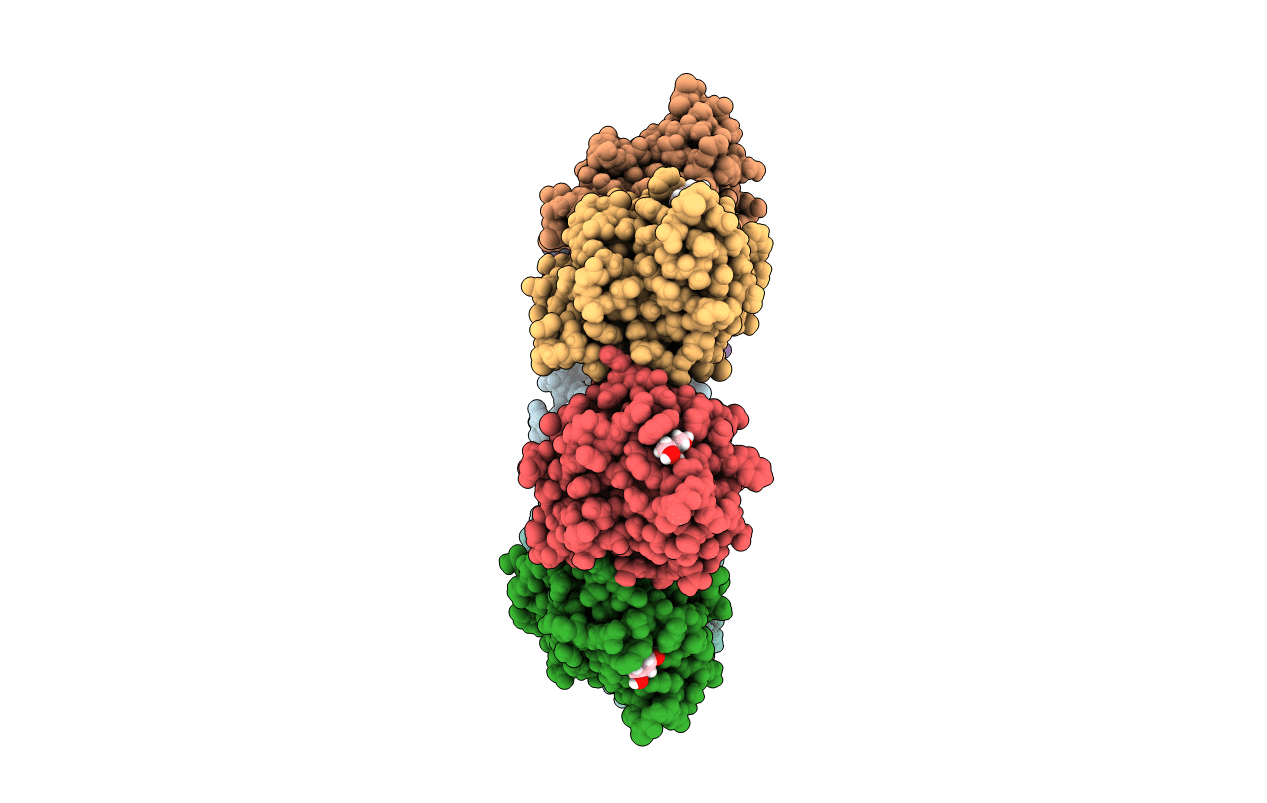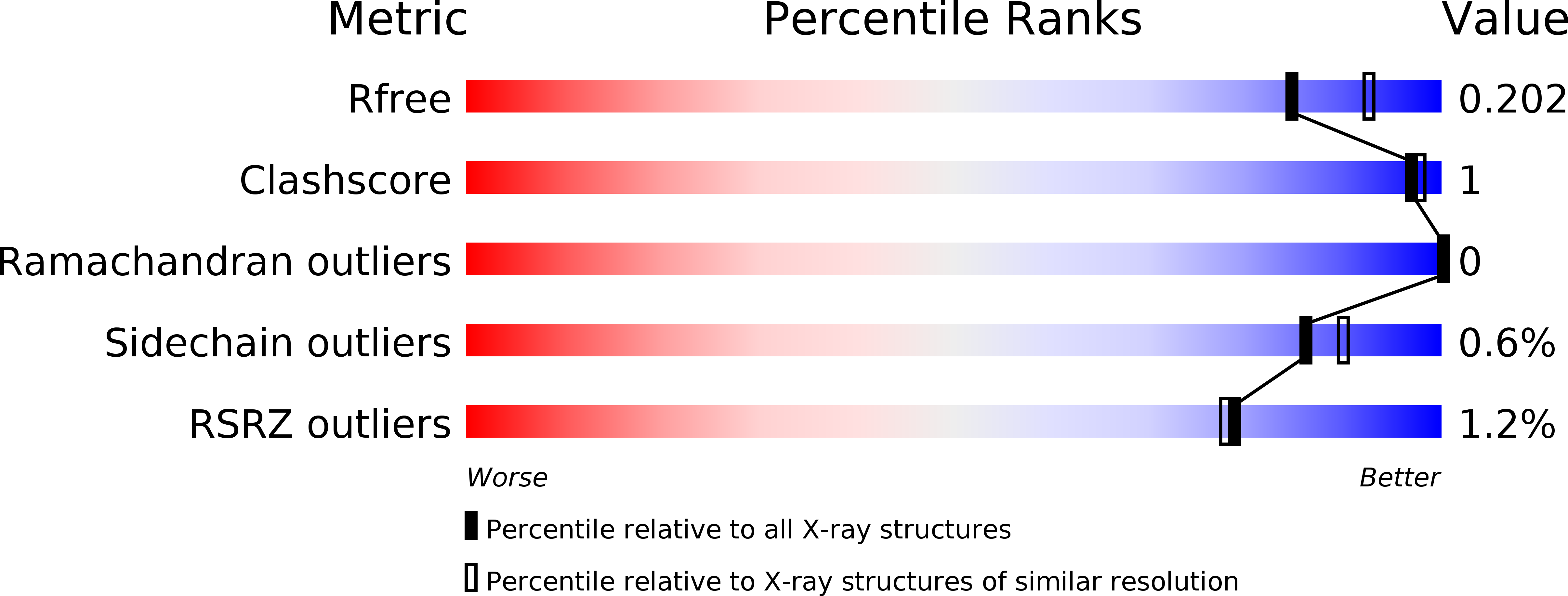
Deposition Date
2014-02-02
Release Date
2014-05-28
Last Version Date
2024-10-30
Entry Detail
PDB ID:
4OWJ
Keywords:
Title:
Crystal Structure of the Vibrio vulnificus Hemolysin/Cytolysin Beta-Trefoil Lectin
Biological Source:
Source Organism:
Vibrio vulnificus (Taxon ID: 216895)
Host Organism:
Method Details:
Experimental Method:
Resolution:
2.00 Å
R-Value Free:
0.20
R-Value Work:
0.16
R-Value Observed:
0.16
Space Group:
P 21 21 21


